Baseball History Comes Alive Now Ranked #2 by Feedspot Among All Internet Baseball History Websites and Blogs!
Guest Submissions from Our Readers Always Welcome!
Scroll Down to Read Today’s Essay
Subscribe to Baseball History Comes Alive for automatic updates (sign-up block found in right side-bar)
As a Free Bonus for subscribing, you’ll get instant access to my two Special Reports: Memorable World Series Moments and Gary’s Handy Dandy World Series Reference Guide!
Ty Cobb Photo Gallery
Click on any image below to see photos in full size and to start Photo Gallery:
Ty Cobb, Part Two:
My Review of Ty Cobb, A Terrible Beauty
When I posted my essay about Ty Cobb and his career the other day, I also posted it on Facebook, as I usually do. A number of readers mentioned the biography of Cobb by Charles Leerhsen, Ty Cobb, a Terrible Beauty, which came out a few years ago and caused quite a stir (click on the link to see the book on Amazon).
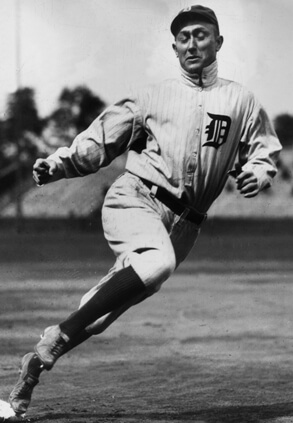
Ty Cobb: A Terrible Beauty
If you love baseball history – as I know all of you do – do yourself a favor and read Ty Cobb; A Terrible Beauty. As I mentioned in an earlier post, the author doesn’t “sugarcoat” Cobb. What he does is present a much-needed fresh look, with warts-and-all on full display.
In the book, Cobb’s many shortcomings, as well as his considerable attributes, are presented within the historical context in which he lived. Using contemporary sources, the Cobb who emerges from Charles Leerhsen’s pen is certainly a flawed human being, like the rest of us; and, as we know, some of Cobb’s flaws were egregious. The author attempts to paint a much more
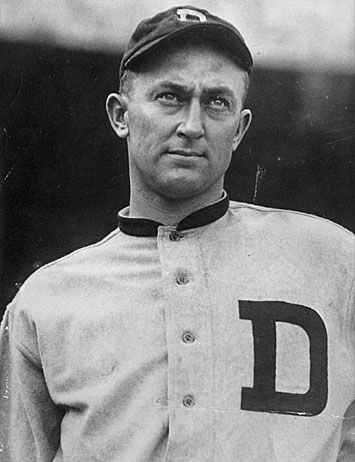
historically accurate and complete portrait of the man who is certainly one of the most complex and controversial characters to ever wear a major league uniform. In my estimation, he succeeds on this count. Like all of us, Cobb deserves to be judged from within the historical context in which he lived; not through the prism of perfect “20-20 hindsight” from our perspective in twenty-first-century America.
Much of the conventional wisdom about Cobb is gleaned from recent biographies by Charles Alexander and Al Stump. We now know that much of the information was wrong. Charles Leerhsen is not timid in pointing out these inaccuracies. It reminds me of Eliot Asinov’s highly popular but historically shallow book, Eight Men Out, about the Black Sox scandal, and how it cemented erroneous stories into the public consciousness, some simply made up. It took the highly-researched book by Gene Carney, Burying the Black Sox, to counter many of these myths. Charles Leerhsen’s book serves much the same purpose.
I’m not trying to convince anyone one-way-or-another about Cobb. I only suggest you read the book, form your own opinions, and not blindly accept the conventional wisdom, which, as we know, is often simplistic and wrong. Those of us who love baseball history and take it seriously deserve a more complete, nuanced portrait of Ty Cobb, not just the media caricatures.
No incident etched Cobb’s reputation as a “dirty player” more than his slide into Frank “Home Run” Baker on August 24, 1909, in a game between the Tigers and Athletics at Detroit’s Bennet Park (See the Classic Charles Conlon photo below). Here are a few quotes from Charles Leehrsen about the incident:
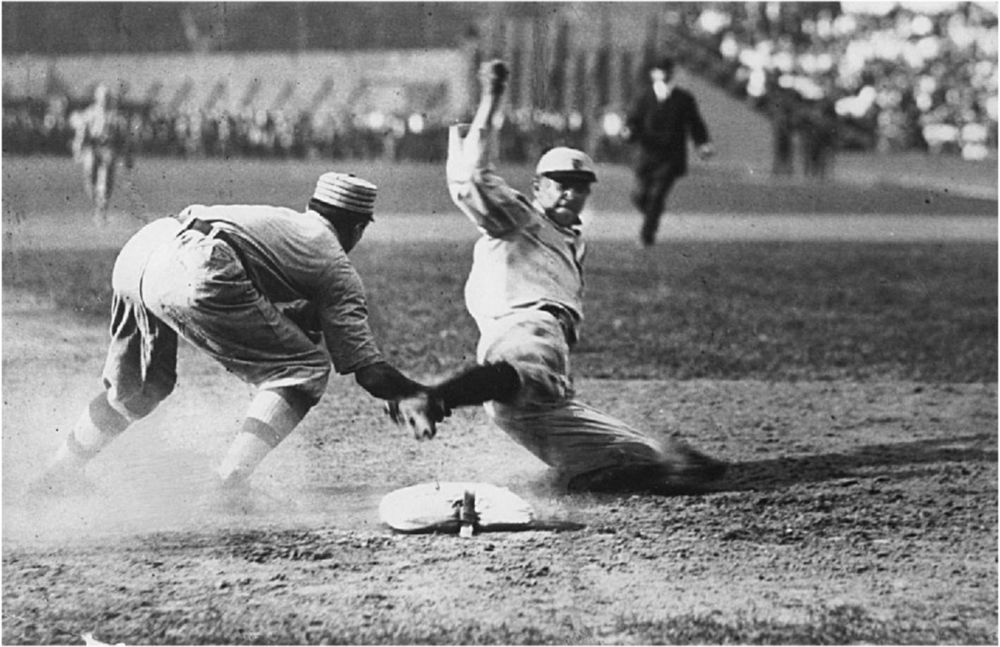
“Cobb had walked and stole second. As Sam Crawford took ball four, Cobb took off for third. As he slid in, he twisted away from Baker, and scraped the infielder’s exposed right forearm with his right spike. Baker had been standing a foot or so off the bag, toward left field, keeping the running lane open, but then leaned back awkwardly into Cobb and wound up tagging him out ahead of the base, on the shoe or ankle. As he did, Baker simultaneously incurred the Deadball Era’s most controversial wound.”
“It was decidedly small and superficial, as controversial wounds go. Though the call had gone their way, Baker and Mack complained to the umpire about Cobb’s method of sliding, the former stomping around to relieve – or perhaps dramatize – the pain. No one was ejected or even admonished. The A’s trainer trotted out and treated Baker’s cut and the game resumed a few minutes later with him seemingly fine. The Detroit Free Press account the next day didn’t even mention the little brouhaha between Cobb and Baker at third.”
“No one was madder – or fake-madder – than Connie Mack, who the next day made a long, fiery speech to the papers about Cobb and how it was his ‘second nature to act mean on the ball field. I would not have him on my team for anything,’ said the man who would one day pay Cobb a sweet sum to play for him. Philadelphia fans threatened to kill Cobb for what he had done to Frank Baker, even though he hadn’t done very much. In the end, their anger helped the story spill out of the sports pages and into the general conversation.”
Here’s how Frank Baker reacted to the incident the next time the Tigers were in Philadelphia:
“After he stole third in the first inning, Baker shook his hand to show that he had no lingering resentment, and Shibe Park shook with cheers. Baker told reporters that his injury had been exaggerated and that he never really had a problem with Cobb.”
Many of Cobb’s contemporaries didn’t accept the view of Cobb as a dirty player. Here’s what Hall-of-Famer Eddie Collins, quoted in Leehrsen’s book, who was on the receiving end of many of Cobb’s hard slides into second, had to say about him:
“I want to correct the erroneous impression that Cobb deliberately went out of his way to spike opposing players. It just wasn’t so. His spikes left their marks on countless players, but that was because he was such an aggressive victory-hungry player. If anyone blocked his way a collision was inevitable. He was an elusive slider who frequently slid away from a tag rather than adopt football tactics.”
That Cobb was a hard-nosed, aggressive player who played every game to win, pushing the envelope of acceptability ever higher and incurring the wrath of many who played against him, no one doubts. But he was also admired by an equal number of his contemporaries. Again, quoting Charles Leerhsen:
“Christy Mathewson was probably as popular as Cobb at the time, but no one was simultaneously as popular and as unpopular as young Ty Cobb. In every American city except Detroit he was at once the dreaded enemy and the biggest draw. He created internal conflict – should I boo his fellow or appreciate him?”
Controversial? Most definitely. A highly flawed human being? No question. But I suggest you read the book and form your own opinions about the “Terrible Beauty,” Tyrus Raymond Cobb. There’s a lot more to this remarkable ballplayer that you may not be aware of. I read the book and I’m glad I did.
Gary Livacari
Photo Credits: “Ty Cobb, A Terrible Beauty,” by Charles Leerhsen; and public domain.
Information: Quotes taken from the same source

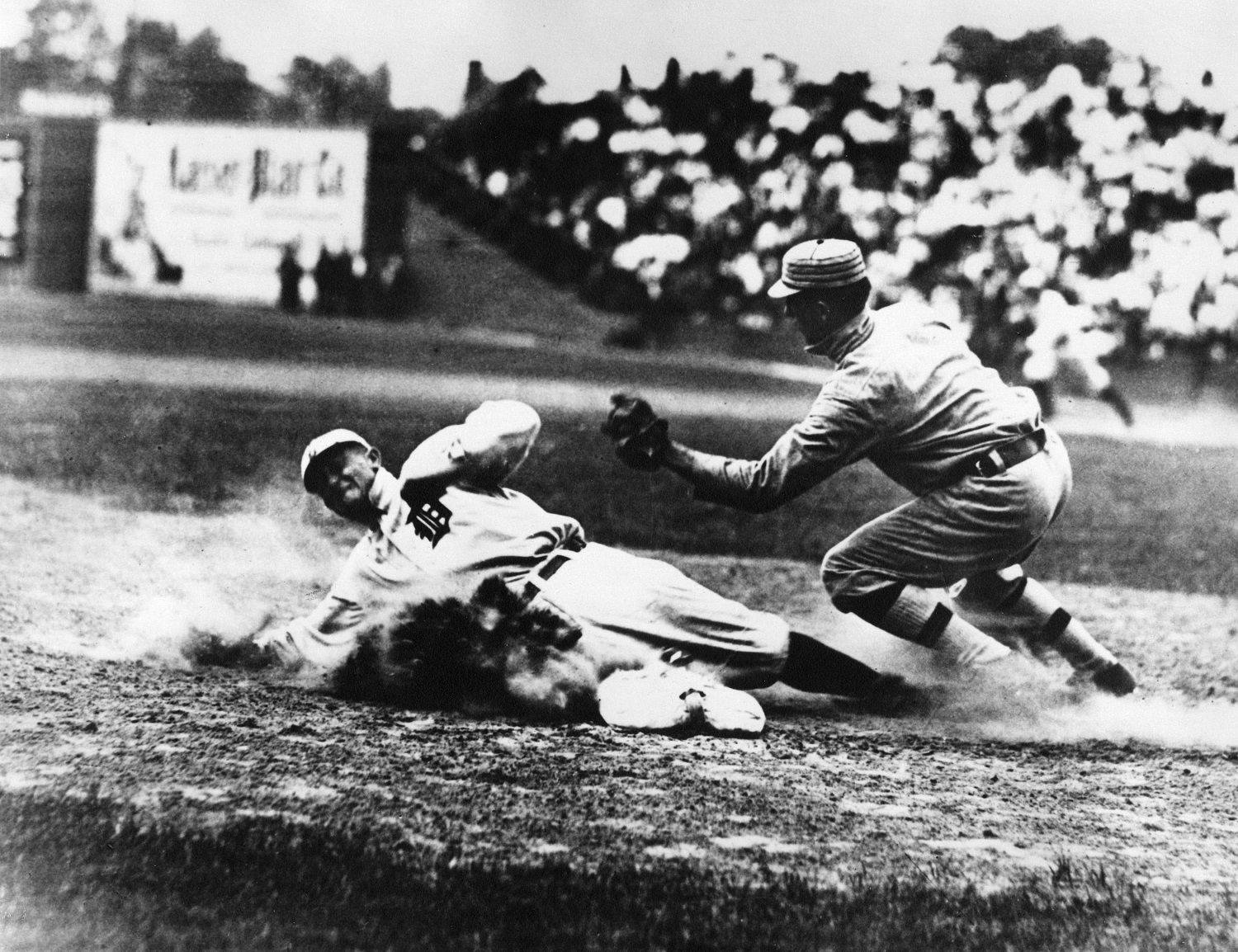
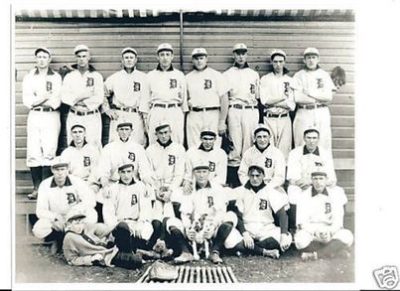
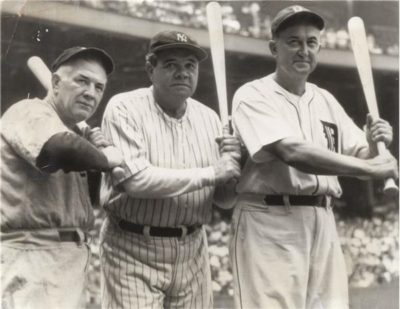

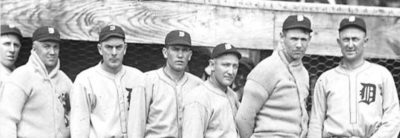
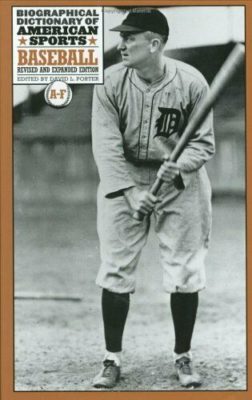
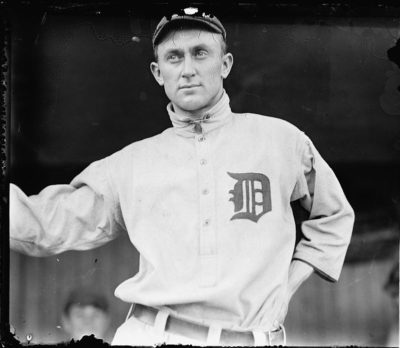
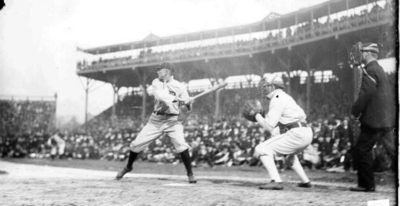

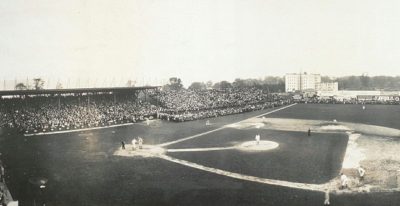
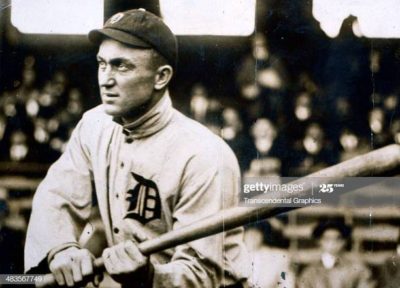
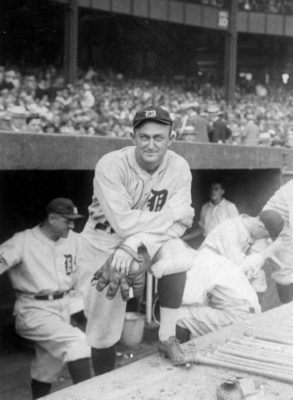
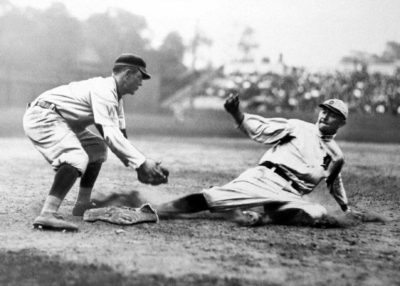
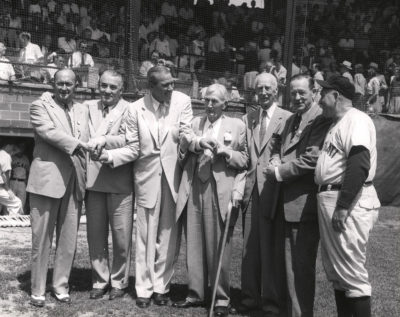
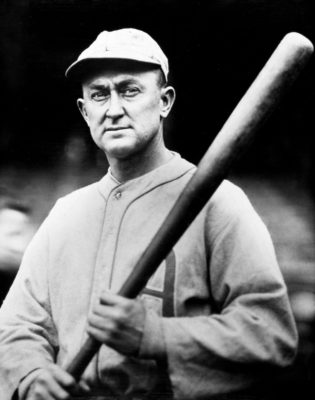
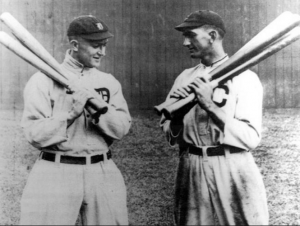
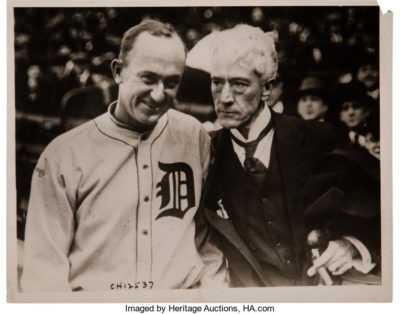
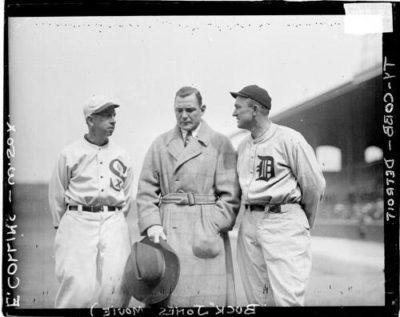
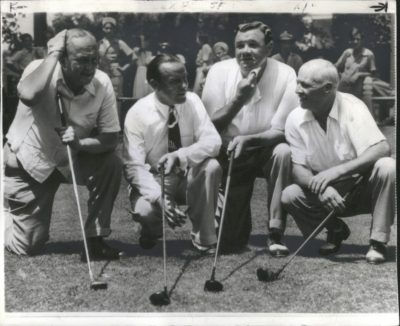
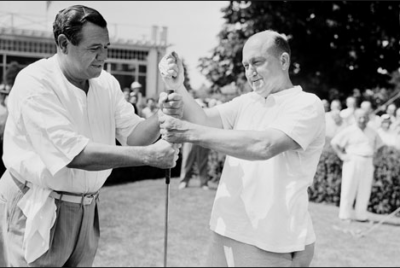
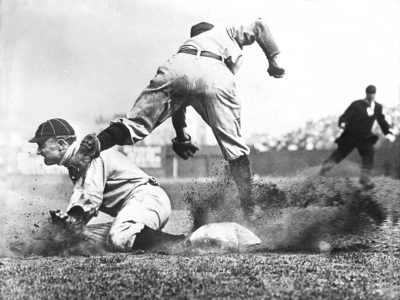
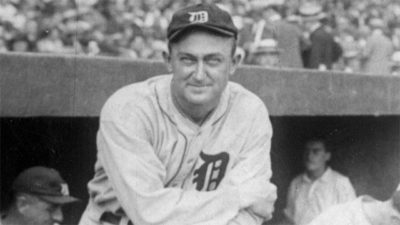
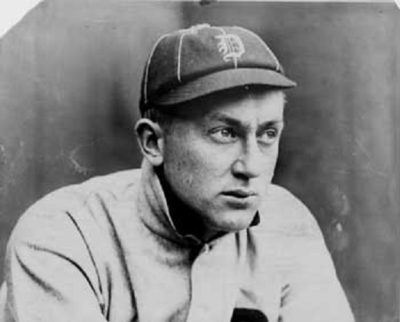
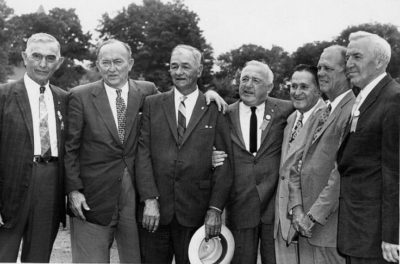
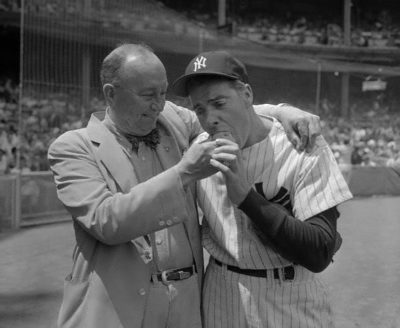
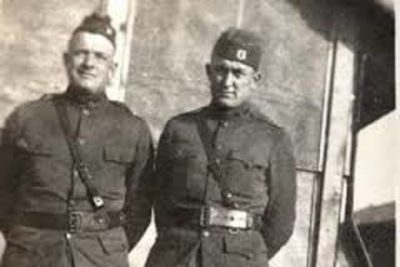
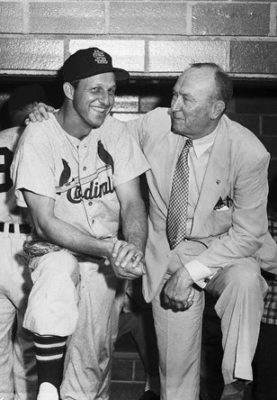
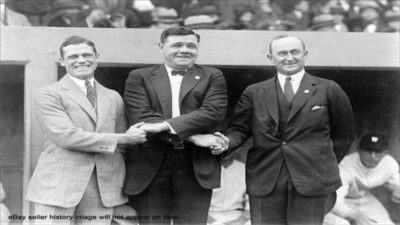
“A Terrible Beauty” is an excellent account of baseball as played 100 years ago and specifically about Ty Cobb’s place as a player and historical figure. It was one of the first books in what we’ve come to see as “rehabbing” the Georgia Peach’s reputation, damaged as it was by dishonest reporting from, mostly, Al Stump.
Another worthy book on the same subject is “Peach: Ty Cobb in His Time and Ours” by Richard Bak. It’s a lighter read in a larger format and with more photos than “A Terrible Beauty.” I believe the books point out that despite diligent research from both authors, neither players nor sportswriters from the era thought of him, or spoke of him, as racist. Times were different, yes. But Cobb was in favor of allowing black players into the big leagues, and championed Jackie Robinson’s arrival. Cobb was highly impressed at Roy Campanella as a ballplayer and said so, repeatedly.
Ty Cobb was among the greatest to ever play the game, and should be judged in context, just as we should hope we will be judged 100 years from now.
Well said Tom…thanks!
Ty Cobb came from a family of abolitionists. I learned that from reading Leerhsen’s fine bio and a whole lot of more truth about the icon. He was a tough as hell ballplayer but a very generous man to former players who were down and out. It’s the quintessential Ty Cobb read, by far, and I’m so glad it was written!
Thanks James, I agree, I’m glad I read the book. As a matter of fact, I think I’m going to reread it.
Great job, Gary, Tom, James! Especially given the toxic and divisive climate permeating 21st Century politics in our country I so appreciate your resolve to withhold quick and easy judgments about Ty Cobb’s character, motivation and conduct. With the help of Mr. Leerhsen’s apparently thoughtful and accurate appraisal you guys have homed in on the facts surrounding Cobb’s complex life and astonishing playing career as opposed to what Gary rightly calls “conventional wisdom” and “media caricatures.” Congratulations.
Today’s so-called journalists would do well to take a page or two out of YOUR books in these respects! While we wait for that day to come, I’ll be looking for my copy of this one.
Best regards,
Michael
Thanks Michael. As I mentioned, as serious students of baseball history, we desire and deserve a much more complete, nuanced, and balanced portrait of Cobb, not just the media caricatures. This book accomplished that.
Hey Gary, you must run a pretty good show to have such knowledgeable, articulate followers. All of the above, plus your fine book review, have convinced me the Leerhsen book is a must read!
Seems Connie Mack was a bit of a hypocrite…and Eddie Collins’ comment might have been on the money about TRC.
Thought I read where Cobb once said he was only following veteran player’s advice about playing the game aggressively, to win–and not out of meanness when he was a young player.
(Did any of you guys see the movie, “Cobb?” Love Tommy Lee Jones, but the film got panned)
Yeah…read the book Bill…trust me, you won’t regret it.
Wish Mr Leerhsen was a political writer so we could have more credible sources.Both sides lack credibility.
He got to become a student of the dead ball era.
Thanks
Not sure what you mean, but thanks for dropping in.
….careful what you wish for, politically.
Best to stick with baseball!
Good point!
Great book;led me to reading all I can on the deadball era
Thanks
Thanks Jerry.
Say, Gary — in your photo gallery, that’s Buck Jones, movie actor sandwiched between Cobb and Speaker. Even sez so on the photo if you’ll look down (in mirrow image)
And re: the golfing foursome showing Cobb, Speaker and the Babe — who’s the 4th?
Could it be a young Bob Hope? Sure looks like him.
my error…. the picture I mean shows Eddie Collins, Buck Jones (mis-ID’d as Tom Yawkee) and Cobb.
Please forgive my spelling. Can’t seem to control my fingers or edit my posts.
my error…. the picture I mean shows Eddie Collins, Buck Jones (mis-ID’d as Tom Yawkey) and Cobb.
…AND, the golfer with Cobb, Speaker and the Babe is champion golfer Billy Burke.
Thanks for the correction and update, Bob. I can’t believe how much Buck jones and Tom Yawkey look alike…you’d almost think they’re related. I just put pics of them side-by-side and they look like brothers!
Leerhsen’s book is a valuable corrective to some of the more mean-spirited and hstorically questionable hatchet job on Cobb’s character, the most egregious of course being Al Stump’s. Nonetheless, I think he goes a bit too far in his efforts to sanitize Cobb — Ty definitely carried a lot of anger around with him (understandably so, given the traumas and mistreatment he endured during his late teens and early 20s), and at the very least he suffered from what today we’d call “anger management issues” and “impulse control.” To write all that off as nothing more than a misguided but ultimately benign attempt to fashion himself as a latter-day “Southern Cavalier” is, in my opinion, insufficient.
As for Cobb’s racism, Leerhsen does do a good job of showing us that at least some of the “racial” incidents he was involved with were actually no such thing. On the other hand, contrary ton what Leerhsen suggests, Cobb did make at least a few public statents during his playing days that indicated strongly that his racial attitudes, while probably not virulently hateful, were basically those of his time — Black folks were perfecly okay as long as they “knew their place” and didn’t threaten the social order. And the 1919 Hotel Ponchartrain incident, in which Cobb called a Black housekeeper “the N-Word” and then physically threw her down a flight of stairs after she protested, is simply too egregious to be written off.
Nonetheless, and to Cobb’s credit, like many of his generation, he moderated his racialist views over time as the world around him changed, and by the 1950s he was perfectly ready and willing to advocate strongly for the desegregation of major-league baseball, and to praise players like Willie Mays and Roy Campanella in sincere, glowing terms.
I’d suggest Tim Horbaker’s “War On the Basepaths” for another, somewhat more balanced, revisionist take on Cobb. Horbaker, like Leerhsen, debunks Al Stump, and he is much more even-handed than most of Cobb’s detractors in showing Cobb in his full complexity. But he stops short of over-sanitizing the story, and his Cobb is more deeply flawed than the man portrayed by Leerhsen, while still being just as admirable and, in many ways, more a victim of his circumstances than an intrinsically “bad” person.
Thanks for the very thoughtful commentary. Please stay in touch.